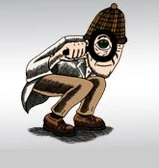Used car inspection is critical when buying a second-hand car. Thoroughly checking all systems and components helps avoid expensive surprises or safety issues down the road. There are many things that can go wrong with an old car, so inspecting a used car carefully is a wise choice.
Not maintaining a used car inspection checklist means you may buy a car with serious mechanical flaws or hidden damage. Unseen engine or transmission problems can leave you stranded. Safety issues like worn-out brakes or bad tires could lead to accidents.
Doing a detailed inspection protects your investment in the used car. Hiring a trusted mechanic to inspect the engine, electronics, accessories, etc. takes time upfront but prevents nasty surprises later. Here is a checklist for inspecting a used car.
Exterior Inspection
The vehicle's exterior condition reveals a lot about its history and how well it was maintained. When inspecting a used car, thoroughly checking the outside is a critical first step. There are key items to cover during the used car inspection checklist:
Check for rust - Look along the bottom of doors, wheel wells, undercarriage, and bumpers. Rust indicates exposure issues and safety hazards. Raised bubbles in the paint finish in these locations means rust is definitely present.Look for dents and scratches - Note down and size up all exterior flaws to gauge if it was well cared for and driven carefully.Body Panel gaps – Gaps between panels should be even and not too wide or narrow. Problems here means the car has been in an accident which may have been serious enough to also cause structural damage.Examine paint job consistency - Mismatched paint can show accident repairs or sloppy maintenance.Inspect windshields and windows for cracks - Stress fractures impact visibility and safety. Also dings from impacts from rocks and other objects may continue to spread and cause large cracks later.Doing a thorough inspection helps you make an informed choice and avoid buying a lemon. Hidden conditions are revealed.
Interior Inspection
After inspecting the exterior condition of a used car, the next shift focuses inside. The car's interior gives insights into wear and tear patterns plus functionality. Include an interior examination in your checklist for inspecting a used car. Key interior inspection items:
Check seat wear and tear - See if the driver's seat shows excessive wearing or tears indicating high mileage. Test all seat adjustments.Inspect the condition of the dashboard and consoles - Check for cracked screens or buttons not working which hamper functionality.Ensure all lights and indicators are functioning - Make sure no warning lights are dead which could jeopardize safety by masking issues. This can be checked by turning the ignition switch to the “On” position without starting the engine.Getting hands-on with all controls, electronics, and adjustable components catches functional defects plus wear issues the used car owner may try hiding. Opt for a car inspection service before buying a second-hand car to make sure you don’t miss anything!
Engine and Under the Hood
Popping the hood and evaluating the mechanical parts is essential when inspecting a used car. Determine how well the previous owner maintained the engine, fluids, and belts by scrutinizing their current state. Include a thorough under-the-hood examination in your used car inspection checklist:
Take a close look at the engine oil by checking the oil level and oil quality. Low oil jeopardizes engine health. Dirty, sludgy oil points to neglect of oil changes.Carefully inspect for any visible oil leaks. The presence of wetness or oil drops means seals are failing and allowing costly oil to leak and be lost.Check the coolant and brake fluid levels. Low coolant compromises the cooling ability leading to overheating issues. Also, look at the coolant color. Low brake fluid hampers stopping ability and poses safety risks.Inspect how clean or dirty the air filter is. A clogged air filter hinders engine performance and fuel mileage.Evaluating this determines if maintenance was ignored, giving you bargaining power before your purchase.
Test Drive
Go on a test drive that simulates your normal driving routes and habits. Listen closely for anything unusual like knocking noises or roughness when the vehicle accelerates. Check brakes by applying them firmly at various speeds also noting any squeaking or grinding sounds. Check suspension and steering alignment at low and high speeds by releasing the steering wheel on an open road and checking for pulling to the right or left. Performing a test drive enables you to gain first-hand insights about the car.
Conclusion
Buying a second-hand car without knowing its true condition is risky. Choose Car Inspectors! Avoid buying a lemon by opting for our professional car inspection service before buying your next used car.
Our ASE-certified master technicians will meet you at the car's location for a bumper-to-bumper evaluation. You'll receive a clear verbal rundown of our findings. We also provide a comprehensive written report detailing the car's specifications and inspection results across all areas. Contact us today!
Disclaimer- The information provided in this content is just for educational purposes and is written by a professional writer. Consult us to learn more about a used car inspection checklist.

